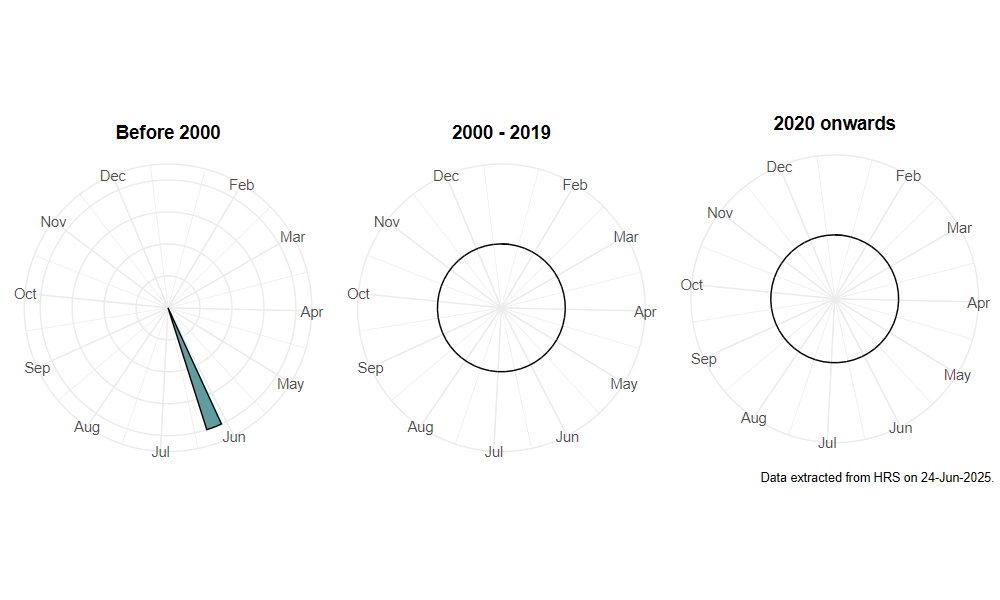Epistrophe flava Doczkal & Schmid, 1994
Identification
Identification difficulty = 4. ![]()
![]() according to Ball & Morris, 20241
according to Ball & Morris, 20241
Synonymy
Added to the British list in 2022 by Morris & Ball (2022)2 on the basis of a specimen from Kent taken in 1988. The species is not easy to distinguish from other banded species of Epistrophe which have orange antennae. It is included in the keys in 'Hoverflies of Northwest Europe' (van Veen, 2014)3.
Biology
The larvae are aphidophagous and have been reported from a variety of plants including aphid galls on Apple, and from Chicory, thistles and Elderberry (Speight, 2017)4.
Flight period
The following plots show the number of unique records per week that were not reported to be of eggs, larvae or pupae.

Distribution
Added to the British list on the basis of a single male specimen taken at Dungeness, Kent on 13/06/1988. The specimen had remained in Roger Morris' collection and was reexamined. Elsewhere in Europe, it is recorded from Scandinavia to Spain and Italy with a widespread, but patchy distribution.

-
Ball, S., & Morris, R. (2024). Hoverflies of Britain and Ireland. WILDGuides (3rd ed.). Oxford: Princeton University Press. ↩
-
Morris, R., & Ball, S. (2022). Epistrophe flava Doczkal & Schmid (Diptera, Syrphidae) new to Britain. Dipterists Digest (Second Series), 29(2), 245–248. ↩
-
van Veen, M. (2004). Hoverflies of Northwest Europe: identification keys to the Syrphidae. Utreht: KNNV Publishing. ↩
-
Speight, M. (2017). Species accounts of European Syrphidae ( No. 97). yrph the Net, the database of European Syrphidae (Diptera) (p. 294). Dublin: Syrph the Net publications. Retrieved from https://pollinators.ie/wordpress/wp-content/uploads/2018/05/StN-2017-Species-Accounts.pdf ↩